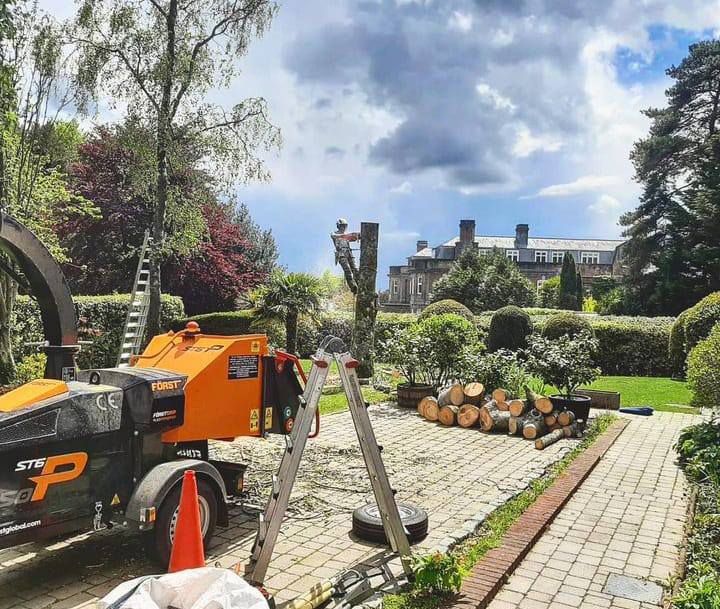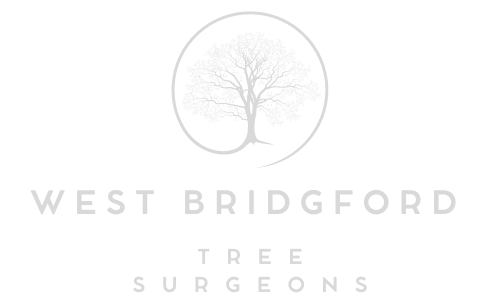Common Tree Surgery Misconceptions and the Real Benefits
Tree surgery is an essential service for maintaining healthy, safe, and attractive landscapes. Yet, it’s often surrounded by misconceptions that can deter property owners from fully appreciating the value of professional tree care. At West Bridgford Tree Surgeons, we’re committed to dispelling these myths and providing the knowledge needed to make informed decisions about tree health. Here, we’ll address some of the most common misconceptions about tree surgery and explore the genuine benefits it offers.
Misconception 1: Tree Surgery is Only for Dead or Dying Trees
One of the most prevalent myths is that tree surgery is only necessary when a tree is visibly unhealthy or on the verge of falling. However, tree surgery is a proactive measure that benefits all trees, not just those in poor health.
The Reality: Regular tree surgery, including pruning, thinning, and crown reduction, promotes healthy growth by removing deadwood, improving air circulation, and enabling the tree to direct nutrients to its thriving branches. By proactively maintaining your trees, you prevent future health issues and support their longevity.
Misconception 2: Tree Surgery Damages Trees
Some people believe that cutting into trees can damage them, causing more harm than good. This misconception arises from instances of improper pruning or unqualified work that may harm the tree’s structure. However, professional tree surgeons use precise techniques designed to benefit the tree.
The Reality: Professional tree surgery, when performed by skilled specialists, enhances the tree’s health and structure. Techniques like directional pruning and selective thinning are carried out to support healthy growth, minimise disease spread, and maintain the tree’s natural shape. With careful planning and expert knowledge, tree surgery benefits the tree rather than causing damage.
Misconception 3: Tree Surgery is Simply ‘Trimming the Branches’
Tree surgery is often misunderstood as basic trimming, with little regard for the science and skill behind it. In reality, tree surgery is a highly skilled practice that requires in-depth knowledge of tree biology, structure, and safety protocols.
The Reality: Tree surgery encompasses various complex techniques, from crown thinning and deadwood removal to tree felling and stump grinding. Each task requires understanding the tree’s anatomy and growth patterns, ensuring the right branches are removed without affecting the tree’s overall health or structural integrity. Tree surgeons are trained professionals who bring knowledge, safety, and precision to each job.
Misconception 4: Tree Stumps Can be Left Unattended
Another common misconception is that tree stumps pose no threat and can be left as they are after a tree has been removed. This assumption can lead to issues over time, such as decay, pest infestations, and even regrowth.
The Reality: Tree stumps, if left untreated, can become breeding grounds for pests and fungi, which may spread to surrounding vegetation. Additionally, stump removal is essential in areas where new landscaping or building projects are planned. Professional stump grinding ensures the area is left clear, safe, and prepared for future use, preventing the potential hazards associated with unattended stumps.
Misconception 5: Anyone Can Do Tree Surgery
DIY tree care is often viewed as an alternative to hiring a professional, with the assumption that basic tree care can be handled without specialised knowledge. However, tree surgery can be dangerous and requires technical skill, appropriate equipment, and knowledge of safety procedures.
The Reality: Tree surgery involves working at height, using specialised tools, and understanding the tree’s structure to make accurate cuts. Attempting DIY tree surgery without proper training can lead to accidents, injury, or unintentional damage to the tree. Professional tree surgeons have the expertise and equipment necessary to perform each task safely and effectively, ensuring high-quality results without risk.
Misconception 6: Tree Surgery is Harmful to the Environment
Some believe that tree surgery disrupts the natural environment, affecting wildlife and the ecosystem within the tree. This belief often comes from a misunderstanding of tree surgery’s purpose and practice.
The Reality: Responsible tree surgery can actually benefit the environment. By removing deadwood, for example, tree surgeons prevent disease from spreading to other trees. Dead and decaying branches can pose hazards, especially in urban settings where trees are close to homes or public spaces. Additionally, selective pruning can improve a tree’s structural integrity, reducing the likelihood of branches falling during storms and protecting the safety of nearby habitats.
Misconception 7: It’s Best to Avoid Tree Surgery in Winter
Many assume that tree surgery is best avoided in winter, believing that trees are more fragile during this period. In fact, winter can be an ideal time for certain types of tree work.
The Reality: In winter, many trees enter a dormant phase, reducing the risk of sap loss and allowing for more precise cuts. Winter pruning also helps avoid the spread of certain diseases and pests that are active during the warmer months. As a result, winter can be an advantageous time for tree surgery, especially for tasks like crown reduction and structural pruning.
The Real Benefits of Professional Tree Surgery
Understanding the genuine benefits of tree surgery highlights its essential role in maintaining a healthy and safe landscape. Here are some of the most impactful advantages:
- Promotes Tree Health: Regular maintenance, including the removal of deadwood and diseased branches, reduces the risk of decay and supports long-term health.
- Enhances Safety: Tree surgery mitigates risks associated with falling branches, especially in high-traffic areas or near structures.
- Improves Aesthetic Appeal: Well-maintained trees enhance the landscape, providing visual appeal, shade, and character to any property.
- Increases Property Value: Healthy, attractive trees contribute to the overall value of a property, making it more appealing to prospective buyers.
- Supports Environmental Health: Professional tree care contributes to a balanced ecosystem, preserving tree health and reducing the spread of diseases and pests.
Conclusion: The Value of Professional Tree Surgery
At West Bridgford Tree Surgeons, we believe that tree surgery is much more than just trimming branches. It’s an essential practice that requires expertise, precision, and a deep understanding of tree health. Our professional team is here to dispel the myths surrounding tree care and provide West Bridgford with the highest standard of tree surgery services.
If you’re looking to enhance the health, safety, and appearance of your landscape, consider consulting with our tree specialists. Contact us today to learn more about how our services can protect and beautify your property for years to come.
Call us on: 0115 647 1188
Click here to find out more about West Bridgford Tree Surgeons
Click here to complete our contact form and see how we can help with your trees needs.

